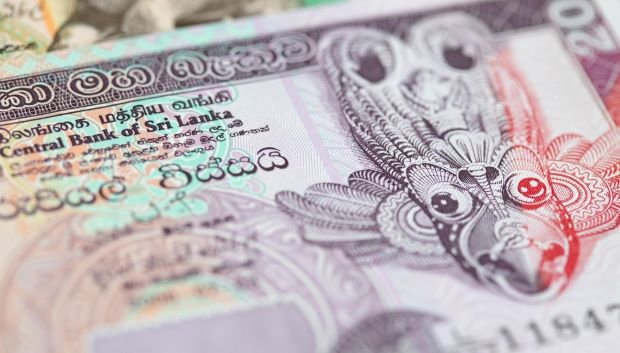Sri Lanka’s deep debt bind
Imposing losses on domestic creditors essentially imposes losses on the country itself
By Mariza Cooray and Roland Rajah
Sri Lanka today exists in a no man’s land between debt restructure and default. In late June, the government released its proposed domestic debt restructure deal, which in turn also signals the terms it will seek from its external creditors.
Domestic debt accounts for about half of the country’s total debt stock and external creditors insist this must be included in any debt restructuring.
The government’s proposal would cut deep into the domestic economy and Sri Lankan society, yet ultimately asks too little from its external creditors. The net result will be far from enough to alleviate the economic and humanitarian crisis playing out. At best, it will leave Sri Lanka teetering on the edge for the foreseeable future, that is until the next economic shock inevitably comes along.
The proposed domestic debt restructure would knock off about 1.5% of GDP in upcoming annual government debt servicing payments. The government says this is needed to meet the debt restructuring targets set by the International Monetary Fund (IMF). It is, however, a minor contribution towards the roughly 15% of GDP reduction in annual payments Sri Lanka needs, according to the IMF.
Yet there is probably not much more the government can do. The reason is that domestic debt is fundamentally different to external debt when it comes to restructuring. Imposing losses on domestic creditors essentially imposes losses on the country itself.
Sri Lankan banks hold most of the government’s domestic debt and bank financial health is already under enormous strain from the ongoing economic crisis. Imposing further large losses on the banks would only exacerbate the situation – hampering credit extension, undermining recovery, and potentially triggering a banking crisis. Or it would require the government to recapitalize the banks, mitigating the value of reducing the government’s financing needs in the first place.
The government, therefore, seems to be concentrating the burden of restructuring its rupee-denominated debt on the country’s superannuation funds. Notionally, the super funds have until mid-August to decide whether they will participate. There is little choice in practice, though, with the government saying that failure to accept would see the funds hit with a more than doubling of existing tax rates to 30%.
Imposing losses on the super funds will hit many ordinary Sri Lankans who are already paying dearly for the crisis. Inflation, for instance, reached nearly 75% in September last year, eviscerating the real value of both household incomes and savings, much of which are held in the super funds for the working class.
Undermining households further will only weaken Sri Lanka’s prospects for economic recovery. It will also make the path to sustainable debt servicing even harder – once again demonstrating the fundamental limits of what can usefully be achieved through domestic debt restructuring.
Why restructure domestic debt at all then?
The main reason seems to be that Sri Lanka’s international private creditors have insisted on it. The value of the domestic debt restructuring is thus more about appeasing international creditors in an attempt to unlock the external debt relief that Sri Lanka truly needs than it is about actually contributing to reducing the debt burden itself.
Another issue is that some of Sri Lanka’s domestic law debt is in the form of US dollar bonds held by both domestic banks and foreign private creditors. These need to be restructured on similar terms to Sri Lanka’s international sovereign bonds. But on this front, the proposed restructuring looks light. In part, this again reflects the need to limit further damage to domestic banks. However, it also seems to reflect low expectations for Sri Lanka’s ability to achieve a prompt and meaningful restructuring with its external creditors.
The problems are readily visible in the debt sustainability assessment and targets set by the IMF program to begin with. Under those targets, government debt would still be more than 100% of GDP in five years, and 95% of GDP in a decade. Instead of total debt, the IMF has put the emphasis on reducing debt servicing payments over the coming years to less than 14% of GDP, itself still a very high level. Yet, as Brad Setser of the Council on Foreign Relations notes, in doing so the IMF may be setting Sri Lanka up for failure.
The IMF program document itself virtually admits defeat, stating that “even after a successful program and debt restructuring, debt risks will remain high for many years”. The IMF notes that the reasoning behind its (soft) debt restructuring targets is to ensure a “higher likelihood for debt reduction”. This would seem to reflect strong concerns that asking for more would increase the risk of a creditor holdout situation, which was the case in Suriname, or an otherwise drawn-out process, as in Zambia.
Yet even with the lighter terms currently proposed, the process is dragging out. A separate negotiation process between the government of Sri Lanka and China seems to have left more traditional creditors understandably nervous.
Failure to secure a restructuring deal with external creditors will prevent Sri Lanka from receiving its next much-needed financing tranche of around US$330 million from the IMF. Without this, the country’s debt crisis will only deepen, and even more debt relief could ultimately be required.
It is in their own interests for Sri Lanka’s external creditors to do far more and much faster. Restructuring domestic debt is a distraction and itself cannot do enough to resolve the crisis.
-This article was originally featured on The Interpreter published by lowyinstitute.org



Comments are closed, but trackbacks and pingbacks are open.